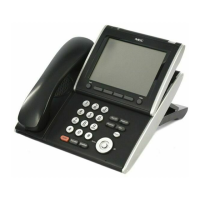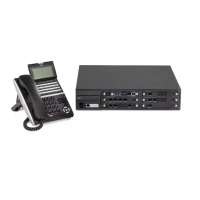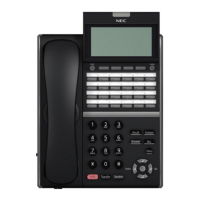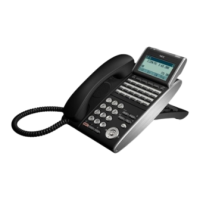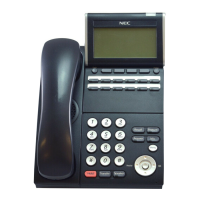1280
Guide to Feature Programming
System Numbering – Service Code
Set the systems internal (Intercom) numbering
plan. The numbering plan assigns the first and
second digits dialed and affects the digits an
extension user must dial to access other
extensions and features, such as service codes
and trunk codes. If the default numbering plan
does not meet the site requirements, use this
program to tailor the system numbering to the
site.
Caution
Improperly programming this
option can adversely affect
system operation. Make sure
you thoroughly understand the
default numbering plan before
proceeding.
Before changing your
numbering plan, use PCPro or
WebPro to make a backup
copy of your system data.
Extension Numbering
Set the extension number. The extension
number can have up to eight digits. The first/
second digit(s) of the number should be
assigned in Program 11-01-01. This allows an
employee to move to a new location (port) and
retain the same extension number.
1
101
2
102
3
103
~
~
99 199
100 3101
~
~
960 3961
Analog Trunk Data Setup – Busy Tone
Detection
Enable/Disable busy tone detection for trunk
ports.
Analog Trunk Data Setup – Loop Start/
Ground Start
Define an analog trunk as Loop Start or Ground
Start.
0 = Loop Start
1 = Ground Start
Trunk Group – Trunk Group Number
Assign trunks to trunk groups (1 ~ 100).
Trunk Port 1 ~ 400 =
Priority 1 ~ 400
Default = Trunks
1 ~ 400 assigned
to trunk group 1
with priorities
equal to the
trunk number.
Trunk 1 = Priority
1 Trunk 400 =
Priority 400.
System Options for ARS/F-Route – ARS/
F-Route Time Schedule
Set this option to 0 so the F-Route table
selected is determined only by the digits dialed
without any relation to the day or time of the
call. If 1 is selected, the system refers to
Program 44-10. If there is a match, the pattern
defined in that program is used. If not, the
F-Route pattern in Program 44-09 and the time
set in 44-08 are used.

